Marie Galante

Anastasia
Phil May and Andrea Twigg
Sun 9 Jun 2019 00:14
|
Marie Galante is a part of the Guadeloupe group of islands and, like Les
Saintes, it is different and unique. It has never been developed for
tourism, has no large hotels and some of the small ones differentiate themselves
by advertising that they have hot water. Having said that, it is still a
part of France and you can buy anything you need at a fairly large Super-U
within walking distance from the main anchorage. There is a shop selling
fresh bread and paninis for lunch right next to the dock. There is a daily
ferry service from Guadeloupe, whose arrival and departure made the only swell
we felt for the week we were anchored here.
Why stay a week? Take a look at the view.
 The beach is miles long and almost deserted. Walking along it feels
like a real tropical island. The trees come down to the waters edge in
places. Land crabs scuttle back to hide as you walk past.
The water around Anastasia was crystal clear. No problem making water
at anchor.
We rented a car and toured the island. The major industry is sugar
cane, obviously for a large flat island, but it was also a source of indigo to
Europe in the time when dyes were made naturally. Indigo plants grow wild in the
hedgerows.
The rum distillery (Distillerie Bielle) we visited has their own mill for
the sugar cane. It was working when we visited, a digger forking cane onto
the conveyor belt headed for the crusher.
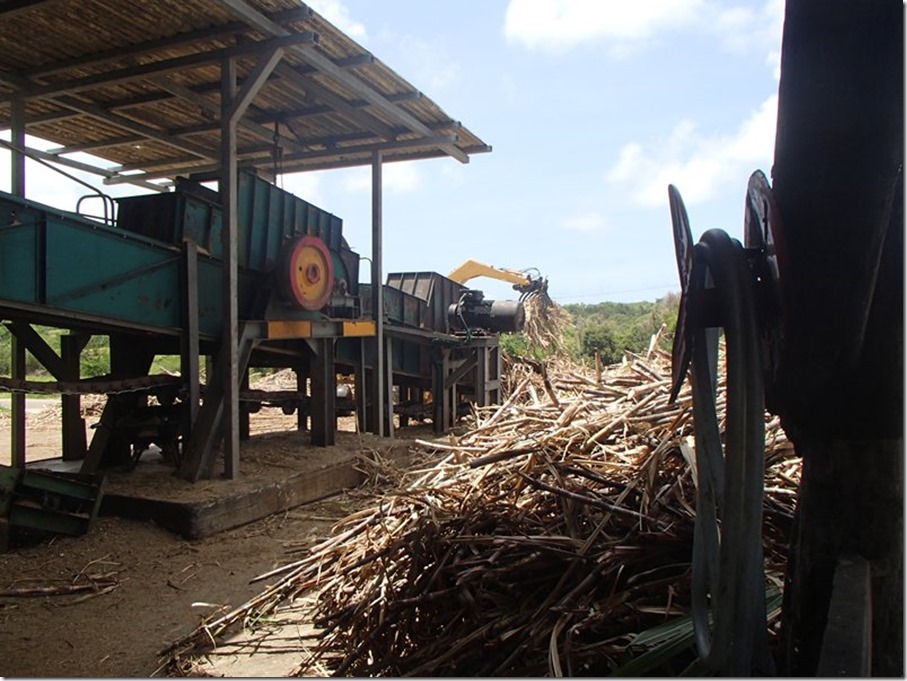 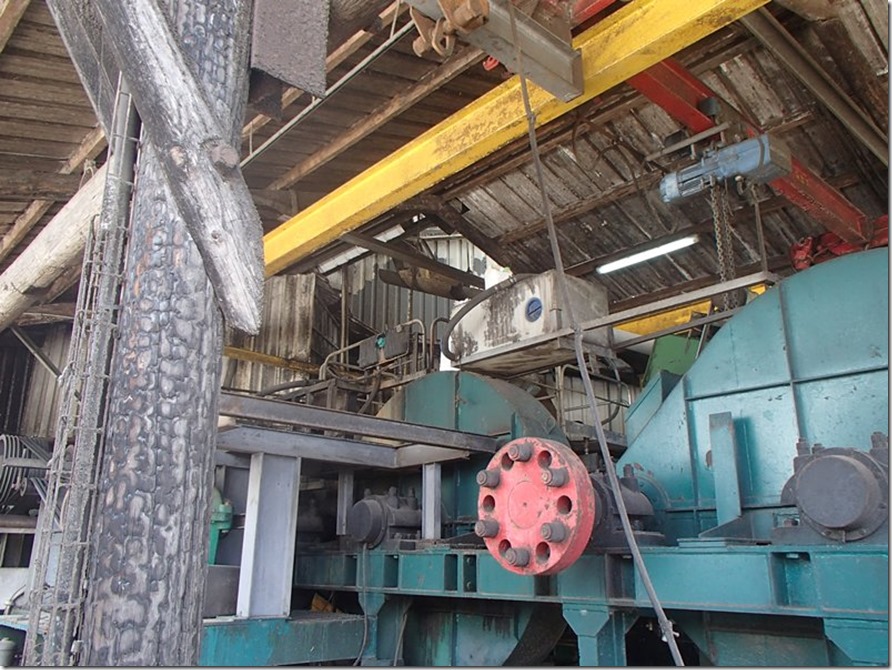 There is quite a history of machinery in the yard, some for visitors and
some more functional.
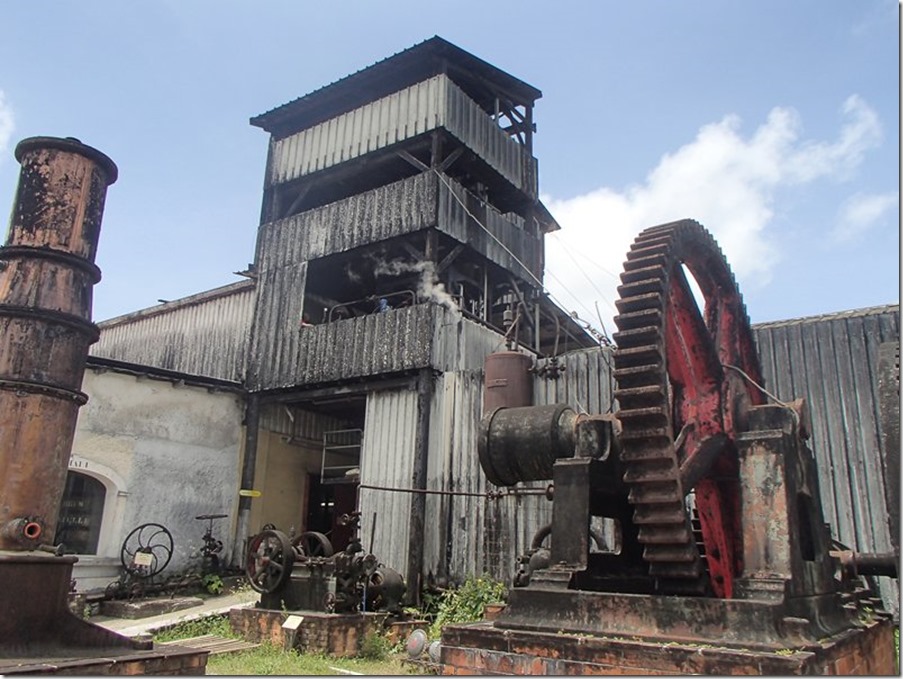 Look carefully and you see that some enterprising local engineer ran cables
from the wheel to support the rotting timbers of the tower behind. We just
came out of that door. Health and safety?
Another stop on the tour was L'Habitation Murât, a partially restored sugar
plantation. Here we learned that moulin is not, in fact, windmill as Le
Moulin Rouge would suggest. The low structure Andrea is striding towards
is the moulin à bêtes, literally the “beast mill”, although they used oxen
rather than any old beast. The windmill on the left was built later.
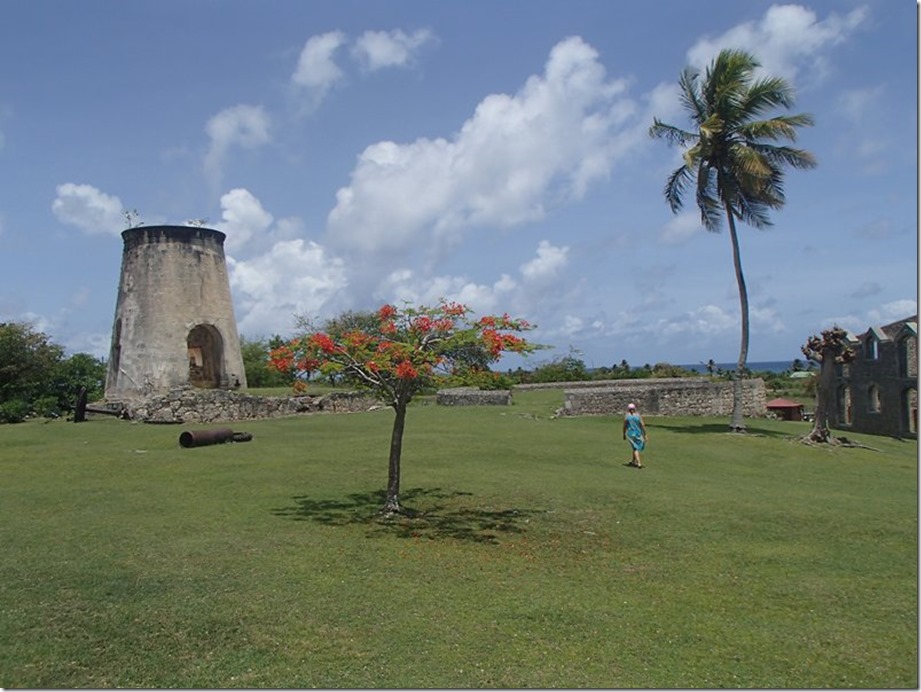 The house was pretty much derelict.
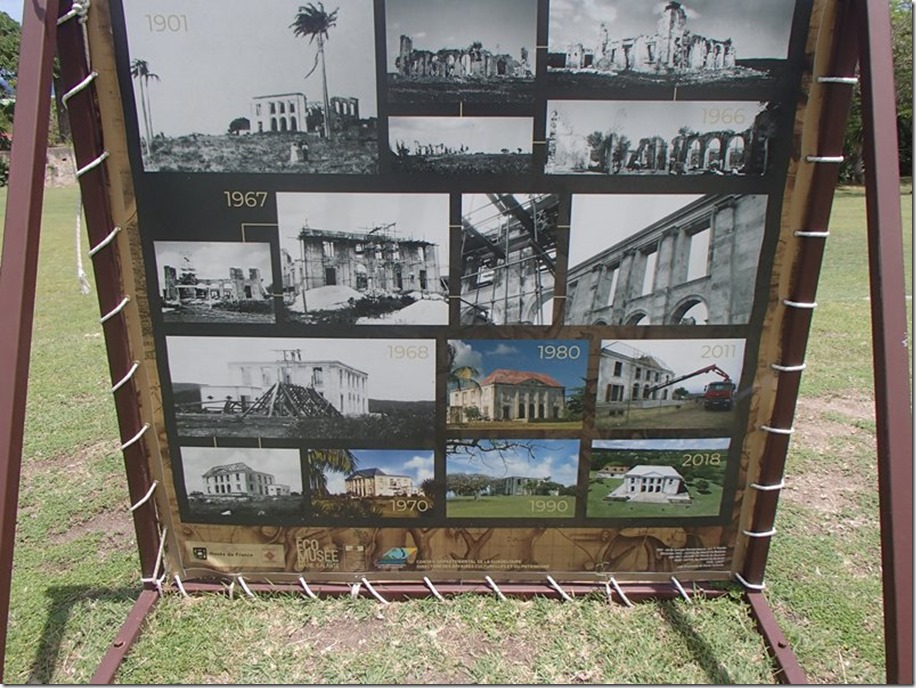 It has now been restored to its former glory.
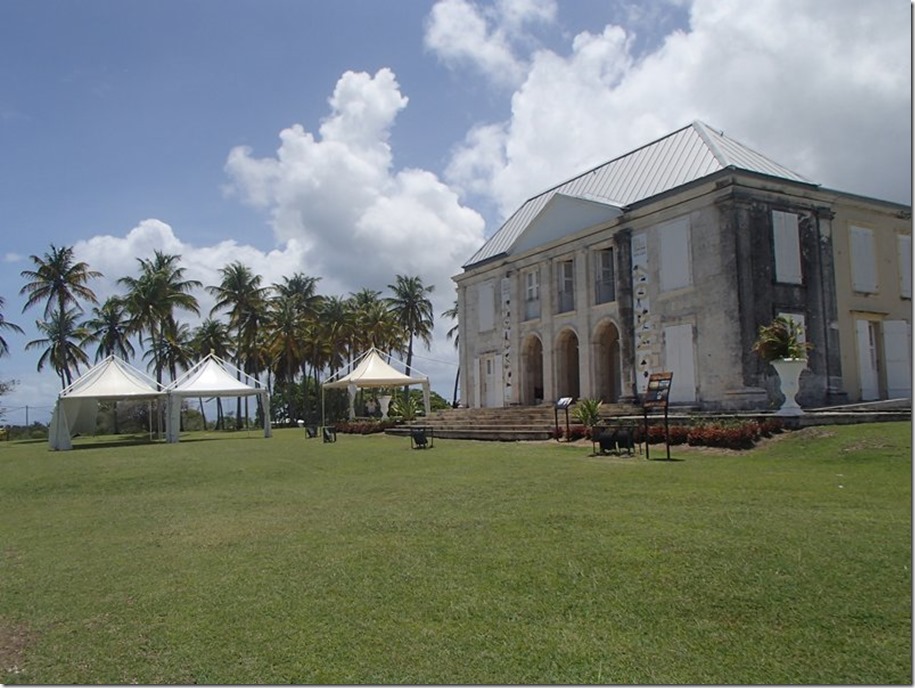 On the way home Andrea suggested we stop for a break at Anse de Mays (the
Mays bay)
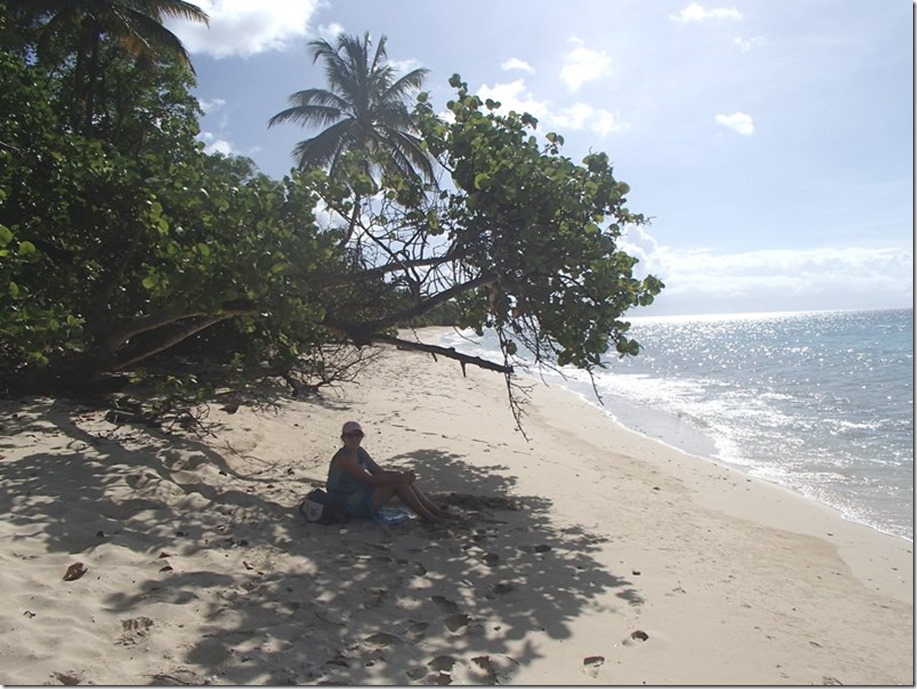 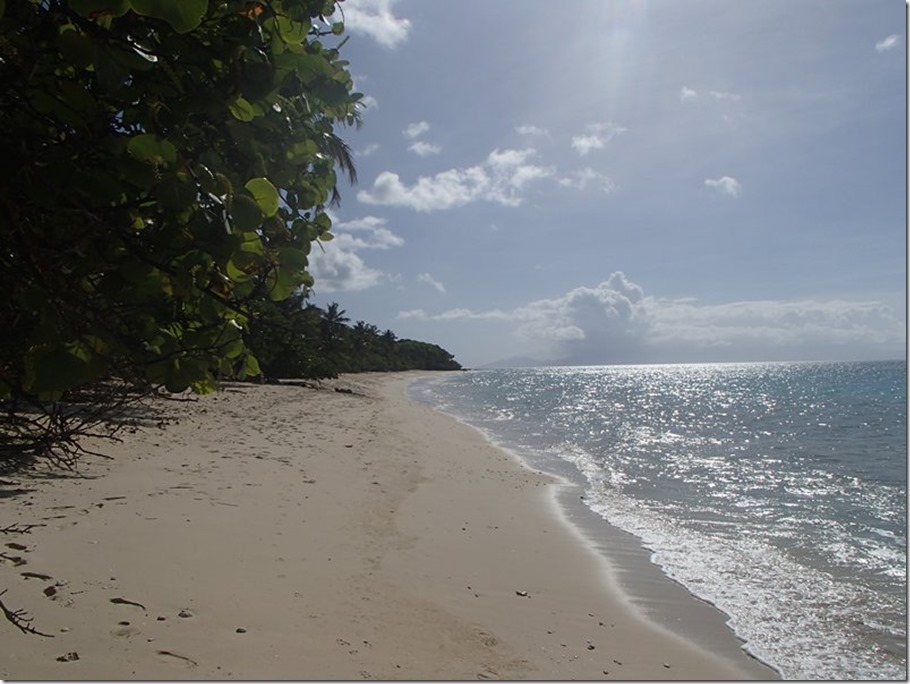 And finally back to Anastasia for cocktails while we watched the sun set
behind Guadeloupe.
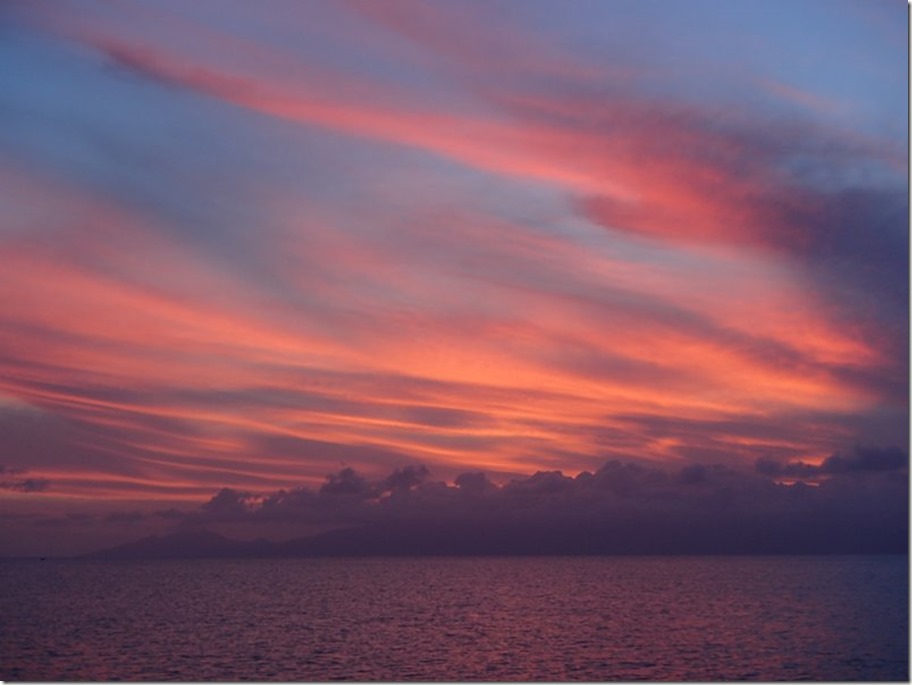 |